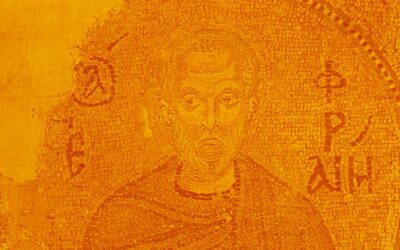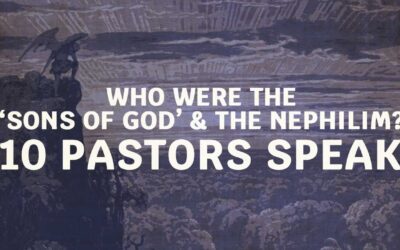You’re not alone in wondering about the enigmatic passages in Genesis 6:1-4. These verses have long fascinated biblical scholars and theologians.
One notable figure who delved into the interpretation of these intriguing verses was Commodianus, a Christian Latin poet from around AD 250.
The Enigmatic Figure: Commodianus

Hailing from Roman Africa, he lived during a period of significant theological exploration and growth within the early Christian community.
His works, although classified as Apocryphi due to certain heterodox statements, provide valuable insights into the understanding of Genesis 6:1-4 during his era, particularly Instructiones.
Unveiling Commodianus’s Interpretation of Genesis 6:1-4
Commodianus believed that the intermarriages mentioned in Genesis 6:1-4 were a result of the actions of angels.
In chapter three of Instructiones, titled THE WORSHIP OF DEMONS, he states, “When Almighty God, to beautify the nature of the world, willed that the earth should be visited by angels, when they were sent down, they despised His laws.”
According to his interpretation, these angels were sent by God to Earth, but they disobeyed divine laws, captivated by the beauty of human women.
Seemingly influenced by 2nd temple literature such as the Book of Enoch, Commodianus expanded on the narrative, asserting that the offspring of these unions between disobedient angels and earthly women were giants. These angels played a significant role in human history, teaching various arts and crafts to mankind, including the dyeing of wool and other practical skills. Commodianus even went further, suggesting that the idols worshipped by pagans were, in fact, the disembodied spirits of these ancient giants, similar to ideas promoted by Josephus, Eusebius of Caesarea, and Justin Martyr.
When Almighty God, to beautify the nature of the world, willed that that earth should be visited by angels, when they were sent down they despised His laws. Such was the beauty of women, that it turned them aside; so that, being contaminated, they could not return to heaven. Rebels from God, they uttered words against Him. Then the Highest uttered His judgment against them; and from their seed giants are said to have been born. By them arts were made known in the earth, and they taught the dyeing of wool, and everything which is done; and to them, when they died, men erected images. But the Almighty, because they were of an evil seed, did not approve that, when dead, they should be brought back from death. Whence wandering they now subvert many bodies, and it is such as these especially that ye this day worship and pray to as gods.
Instructiones
It is important to note that Commodianus presented this interpretation as a historical fact, without any indication of controversy or doubt. For him, the story of the fallen angels and the Nephilim was an integral part of his understanding of the world’s history and the influence of supernatural beings on human affairs.
The Quest for Understanding
Commodianus’s interpretation of Genesis 6:1-4 offers a unique perspective, rooted in the theological and cultural context of his time. However, it is essential to recognize that both ancient and modern scholars continue to grapple with the complexities of this biblical passage. There are many unanswered questions, and unfortunately, the internet is filled with disinformation and sensationalized content surrounding the topic of the Nephilim in Genesis.
This is where resources like Chasing the Giants come into play. By compiling ancient sources, meticulous research, and quality analysis, Chasing the Giants aims to be a dependable and searchable database of information on the “sons of God” and the Nephilim, tracing their origins from the Genesis account. It is a valuable tool for anyone seeking reliable insights and a deeper understanding of these enigmatic passages.
Ultimately, the exploration of Genesis 6:1-4 leads us to ponder the imperfections of our world and seek truth within the teachings of Jesus. While the interpretations may vary, the importance lies in engaging in thoughtful discourse and relying on trustworthy sources to uncover the deeper meanings behind these ancient texts.






